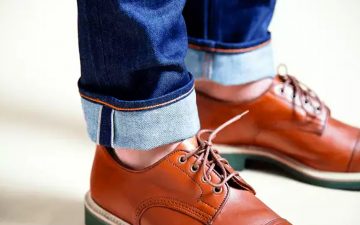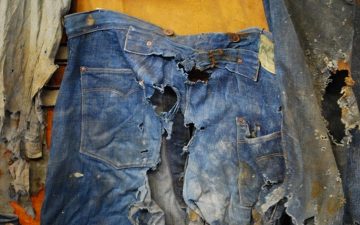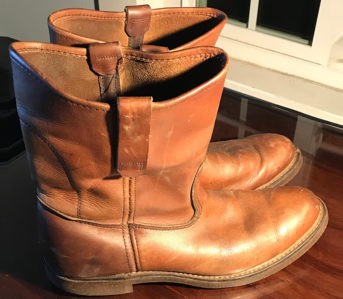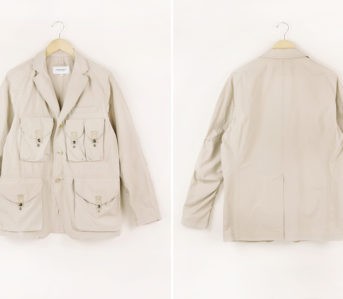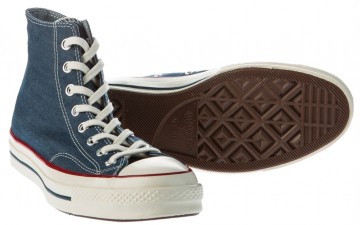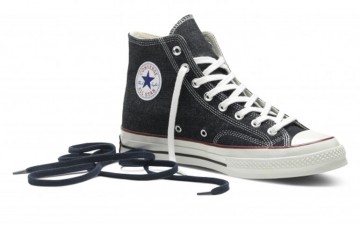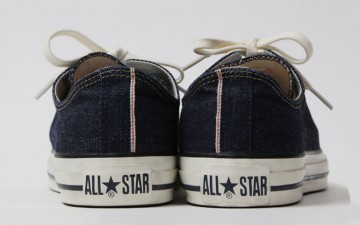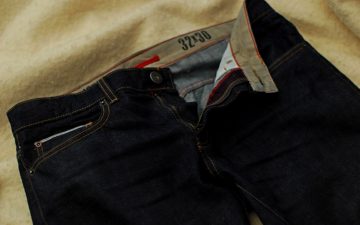The Air Jordans of the early twentieth century, Converse have made the long journey from cutting-edge sportswear to casual-retro beater shoe of choice. Who among us hasn’t relished the process of totally destroying a pair of brand new Chuck Taylors? Yet it’s hard to think of these versatile shoes as anything remotely athletic.
As was briefly mentioned in our article on Shoe Silhouettes, rubber-soled, canvas shoes marked a significant moment in the history of athletic footwear and miraculously, they stayed popular even after athletes and their coaches moved on to better, more-engineered shoe options. Tastes and shoe-tech changed, but Converse stayed laced on the feet of American youth.
Converse’s History and Philosophy
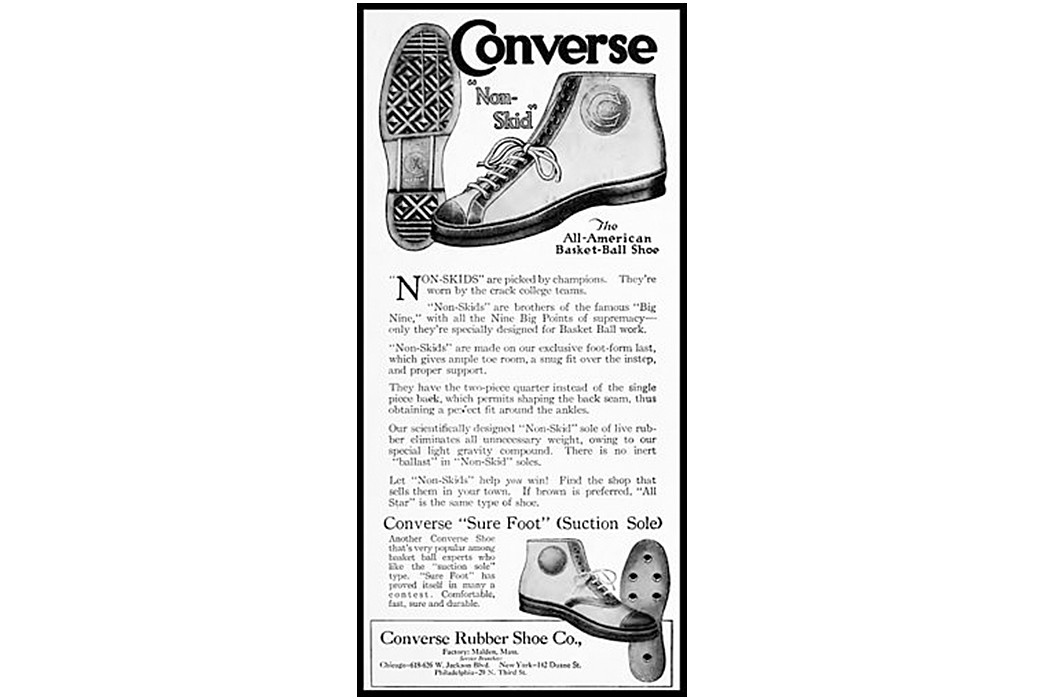
Converse “non-skid.” Image via Wikipedia.
For most of it’s life, Marquis Mills of Malden Massachusetts, had primarily focused on rubber galoshes and other waterproof wear, but in 1908 they turned their gaze to the rapidly growing sportswear market. Only fifty years earlier, Charles Goodyear had received his patent to vulcanize rubber, allowing for all manner of rubber-related creations.
In our case, shoes. This new technology paired with the professionalizing sports teams all over the country, created both the resources and demand necessary to manufacture a new kind of sports shoe. The result was the below shoe, called the No-Skid for its innovative, grippy sole. The shoe came in leather and canvas variants, mostly in rather unattractive shades of brown.
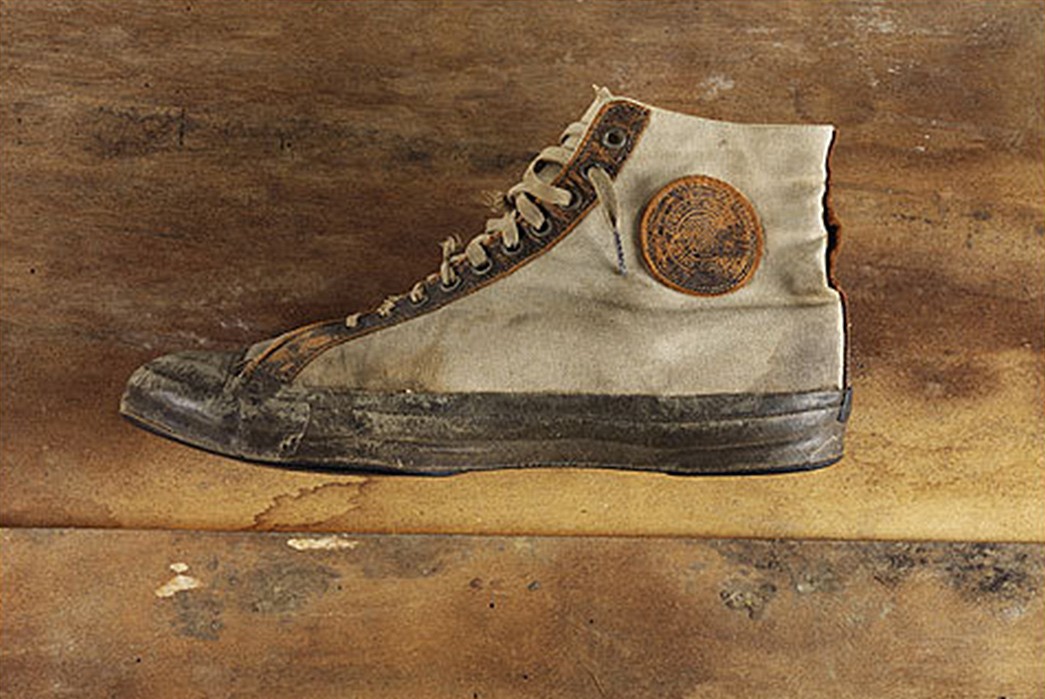
The original Converse “No Skid” shoe. Image via Boston.com.
The Converse Rubber Shoe Company was an offshoot of Marquis, whose primary focus shifted to athletic footwear by 1915. In 1920 their signature shoe was re-named the All-Star to better convince athletes it was a real champion’s shoe.
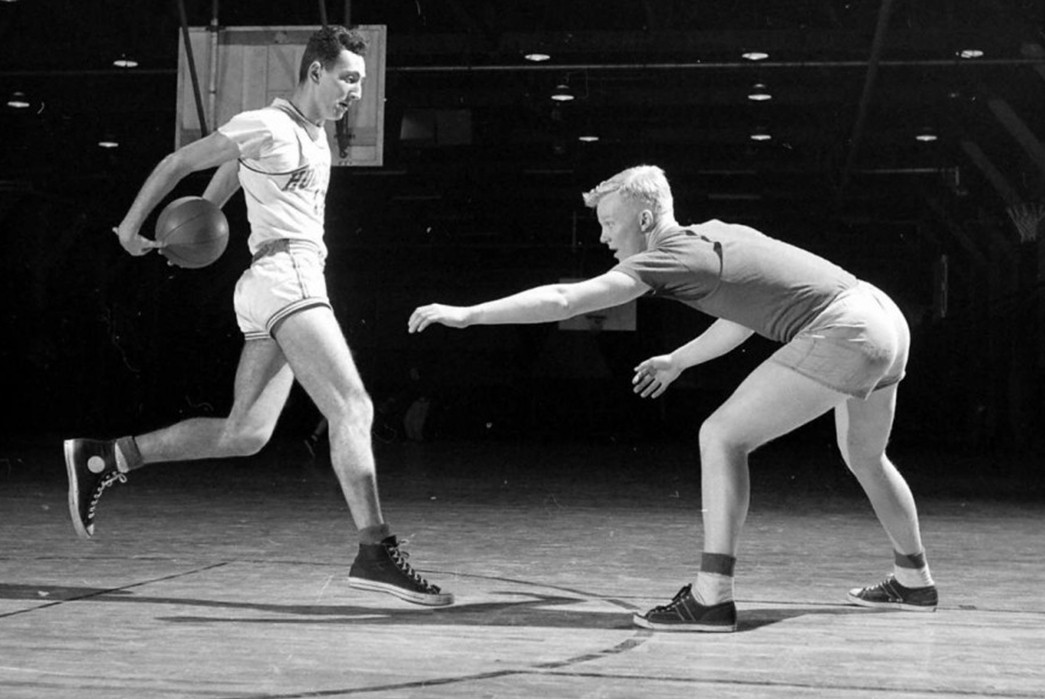
Ballin’. Image via The Idle Man.
The same year of the All-Star’s rebranding, Chuck Taylor of the Akron Firestones came into Converse HQ complaining of hurting feet. This whinging basketball player, however, found himself employed as a salesman and ambassador for the fledgling brand. It was immediately clear to Taylor that the Converse All-Star was going places and could very well be the answer to his ailing feet.
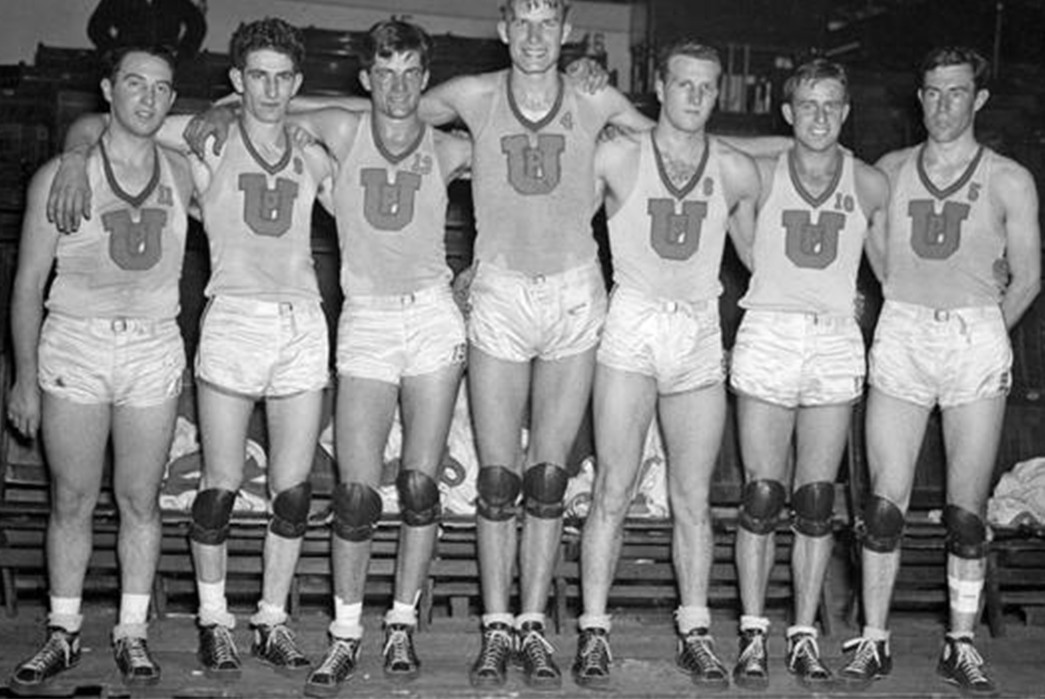
Universal Studios Basketball Team, bound for the 1936 Olympics. Image via BBC
Chuck Taylor was anything but passive during his tenure at Converse. He drove all over the country, spreading the good word about the shoes that would soon bear his name. He lobbied for the shoe so effectively that when, in 1936, basketball was added to the Olympic roster, the American team was wearing Converse. In fact, they were wearing what is perhaps now the most popular model, the classic white high-top with blue and red accents.
Just as with Champion’s sweatshirts, another sporty invention, Converse’s practical application was identified by the American Military at the advent of World War II. The war years, as with many other clothing pieces, democratized Converse. Millions of young men training for service wore the canvas high-tops.
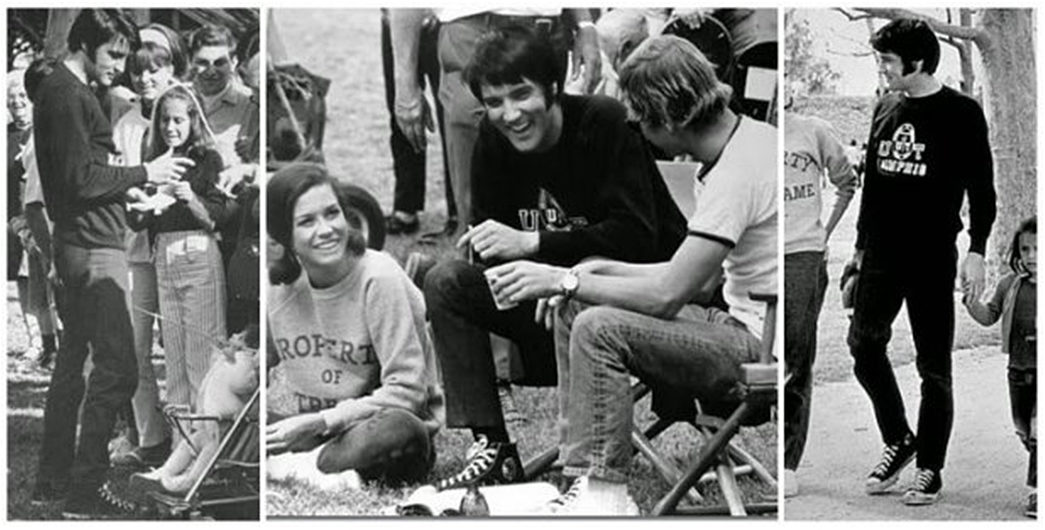
Elvis wearing Converse’s newest color way. Image via Urban Industry.
At war’s end, the famous black and white model was developed. This new, sleek colorway coincided with the formation of the National Basketball Association (NBA). And to further dominate the market, Converse introduced the oxford, or the low-top.
Spurred to change things up in the late 60s, Converse introduced the One Star. With more support and cushioning than ever before, it was aimed at the basketball players who had been straying from the Converse brand. The below version was a second attempt to get people excited about the new silhouette. It stayed on the market for exactly one year, 1974-75 and then vanished. Converse was in trouble.
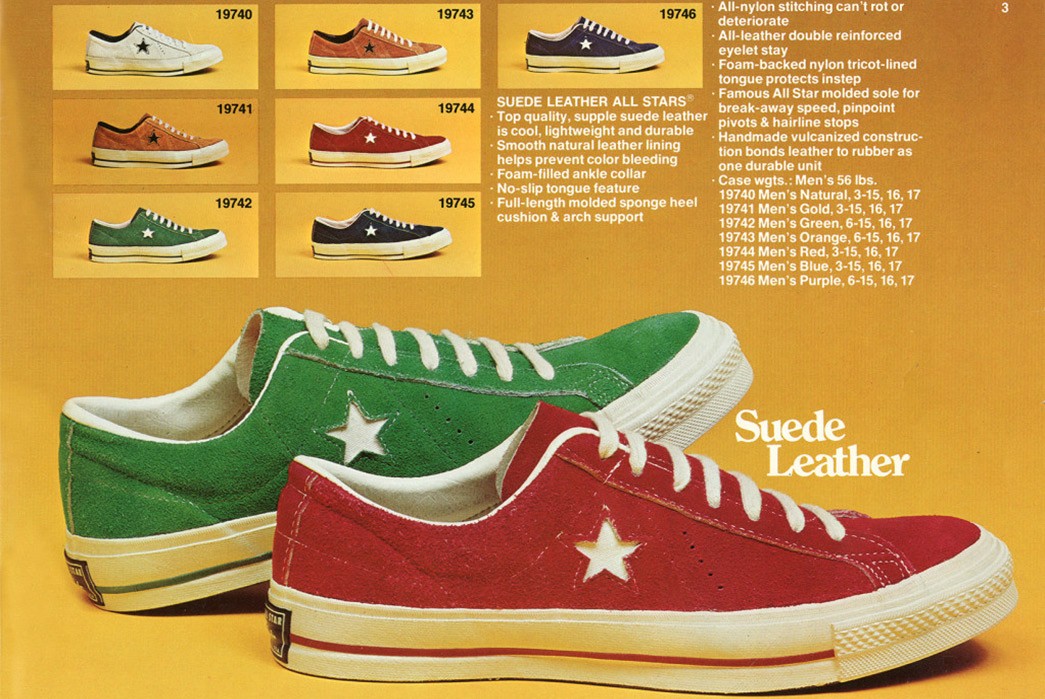
The One Star attempts to reclaim Converse’s former glory.
But as the sports world was exposed to new technologies and specialized footwear options in the 1970s, usually offered by Nike, Converse became more of a countercultural touchstone than a practical choice for athletes. Chuck Taylor’s were more likely to be found on the feet of musicians and actors than on a starting line.
Chuck Taylor’s brand had once reigned supreme, controlling 80% of the footwear market at its height. Back in the 40s and 50s it had been easy enough to stave off the advances of brands like PF Flyers (despite the fact that PF actually had cushioning in its shoes, making it a much better choice for athletes), but in the 70s and 80s, shoes like Onitsuka Tigers, Air Jordans, and other higher-tech options drove the company to new lows.
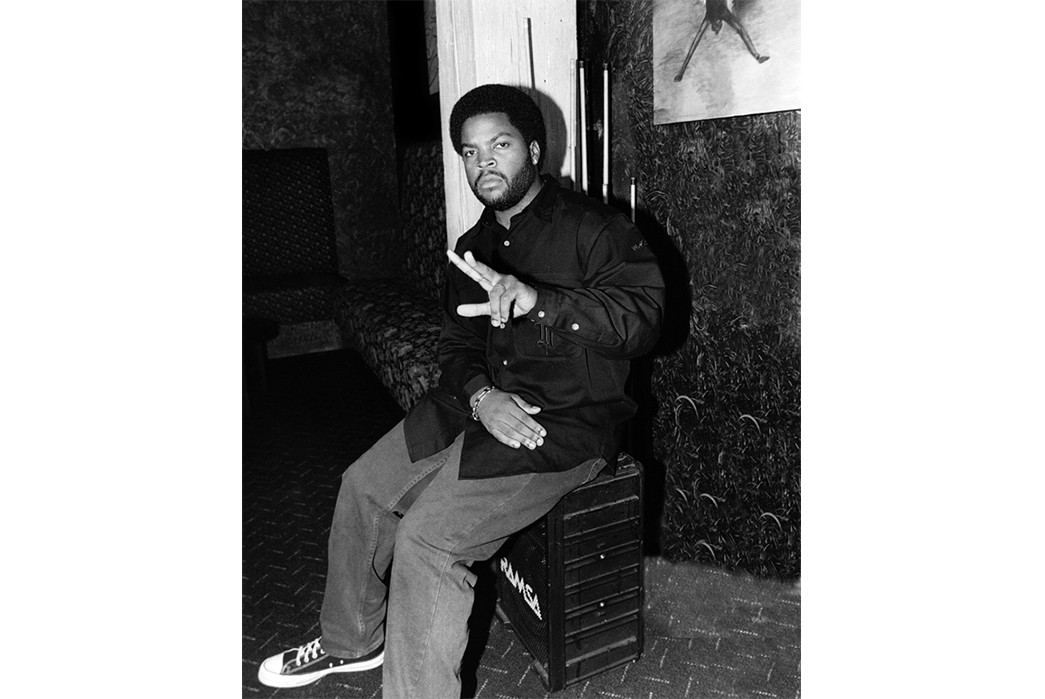
Ice Cube in Chucks. Image via Spin.
Converse slowly declined until declaring bankruptcy in 2001, at which point the company was bailed out by one of its greatest competitors, Nike. Nike shifted production from the U.S. to Asia to cut costs and in so doing, greatly diminished the quality of the product. But because the look was so distinct, people continued buying the shoe, regardless.
Converse Today
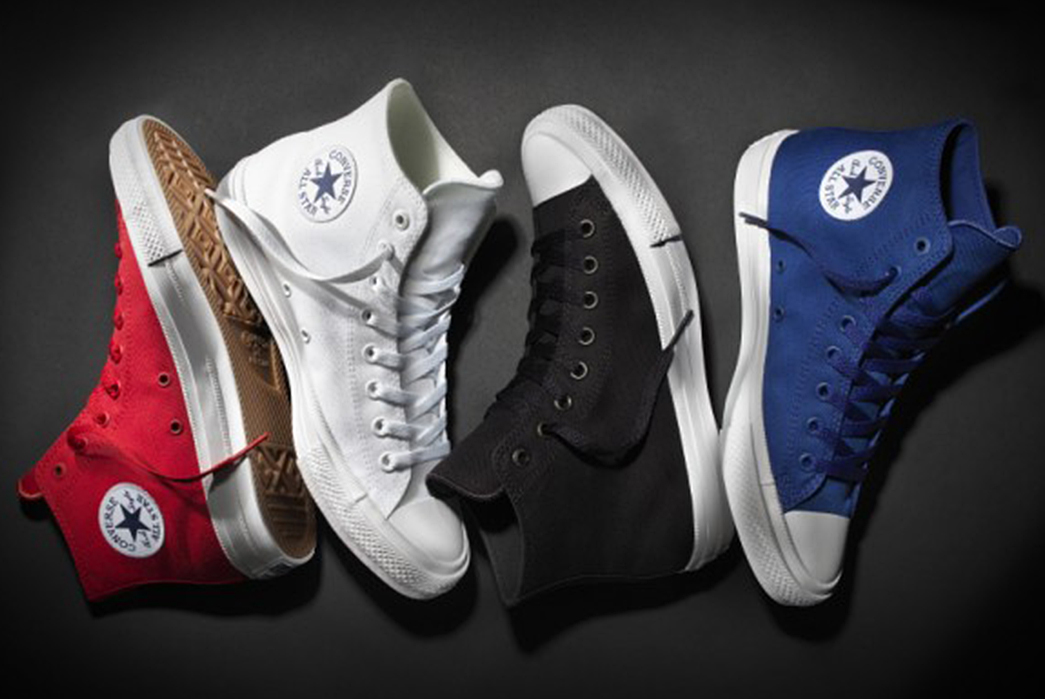
Chuck Taylor 2. Image via Converse.
The Converse of today (as owned by Nike) has proved to be a litigious organization, one prone to blunders on a huge scale. The above Chuck Taylor II was announced in 2016 and its release wreaked havoc on the company, stalling growth for the first time since the brand’s revival in the early 2000s and led to the firing of previous Converse chief David Grasso.
The changes were largely cosmetic, although the brand added padding in the sole and raised the price considerably. Whatever the reason, people refused to cough up the higher price and this failure rocked the company to the core. The Converse website was quietly folded into Nike’s around the same time.
Converse has been filing lawsuits against other shoe-makers periodically since 2008, but in June 23, 2016 the International Trade Commission ruled that the toe cap, bumper, and stripe were not sufficient for Converse to trademark. Converse has refused to accept this ruling and is now appealing this decision.
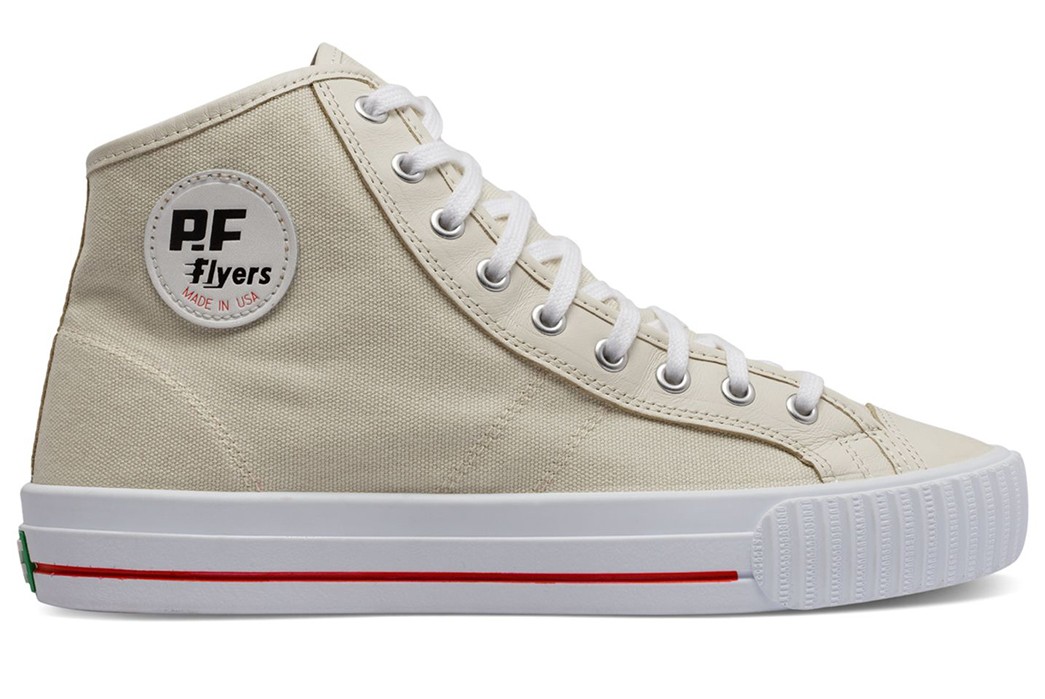
PF Flyer Made in USA. Image via New Balance.
The above pair of PF Flyers were made to prematurely celebrate Converse losing their punitive lawsuit against thirty other shoe companies. If Converse has its way, it would have exclusive right to combine the toe cap, bumper, and stripe seen above… and in many other shoes.
Iconic Products
Chuck Taylor All Star
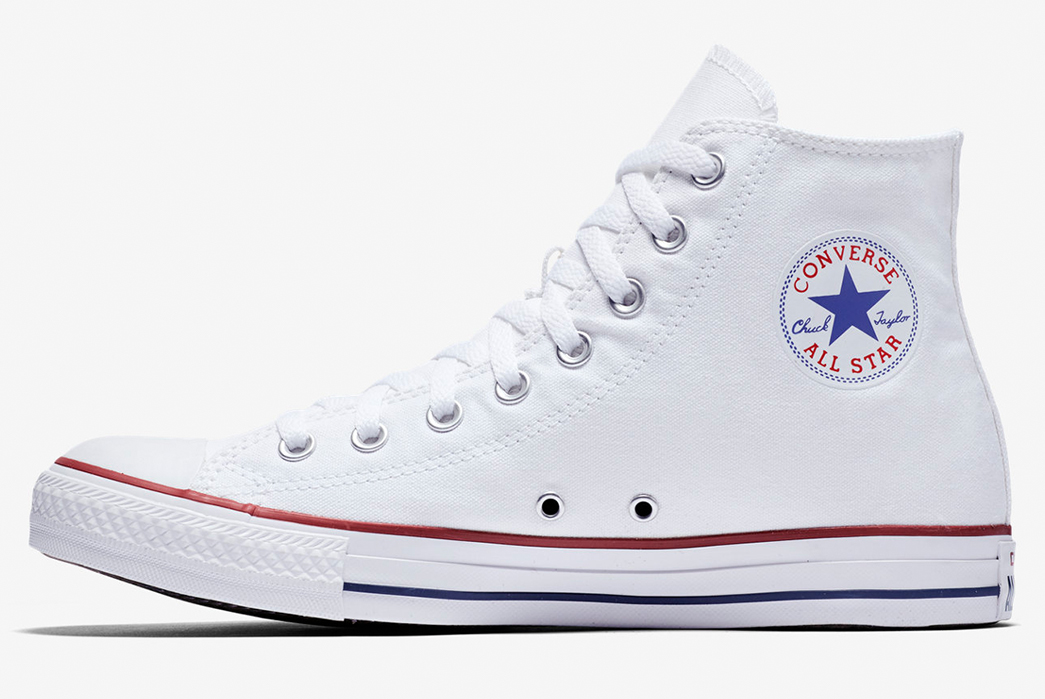
Converse Chuck Taylor All-Star. Image via Nike.
The low-end Chuck Taylor, this is the one you’ll find in malls and on the feet of the vast majority of consumers. These Chuck Taylor’s look similar to the old ones, but with many corners cut. Canvas is of an inferior quality, support is wanting, and the materials are cheap.
If you haven’t bought a pair since the 90s, you’ll be in for an unpleasant surprise. Since shifting production to Asia, the quality of these Chucks have fallen considerably.
Available for $55 from Nike.
Chuck 70
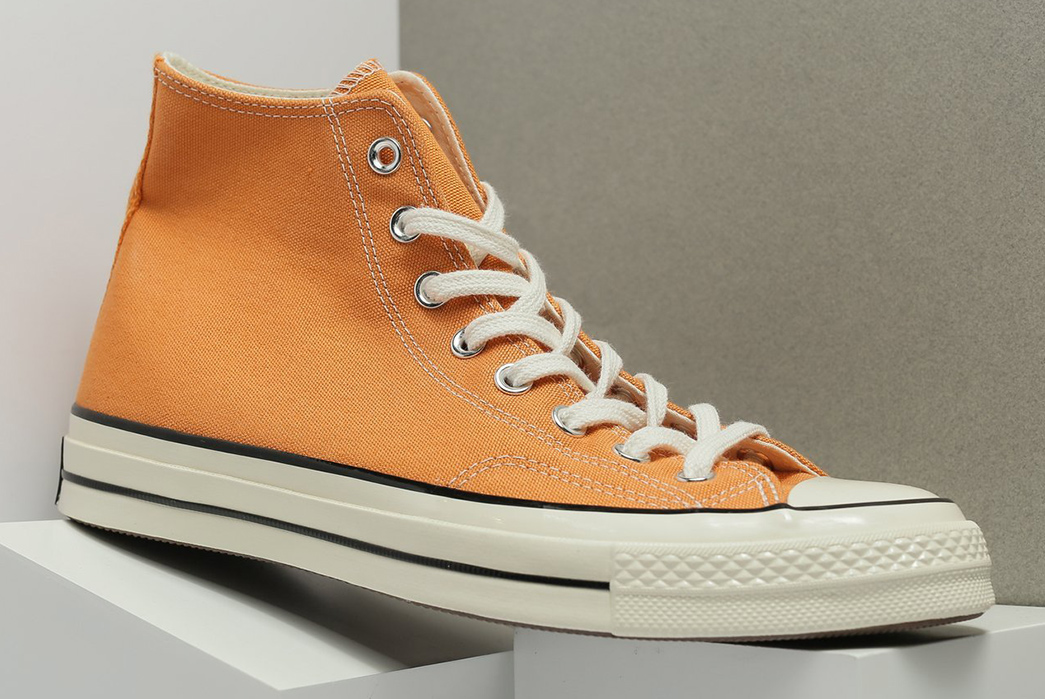
Chuck 70. Image via Oneness.
For only 30 dollars more, you can be the proud owner of the Chuck 70s. These reproductions are also made in Asia, but are far higher quality. With double-ply canvas, cotton laces, and higher foxing, these shoes are made similar to the higher standards of the 1970s Chuck Taylor’s.
They come in the regular core colors, with dozens of interesting hues and collaborations available all throughout the internet. If you want to buy Converse, do yourself a favor and cough up the extra cash.
Available for $85 from Nike.

